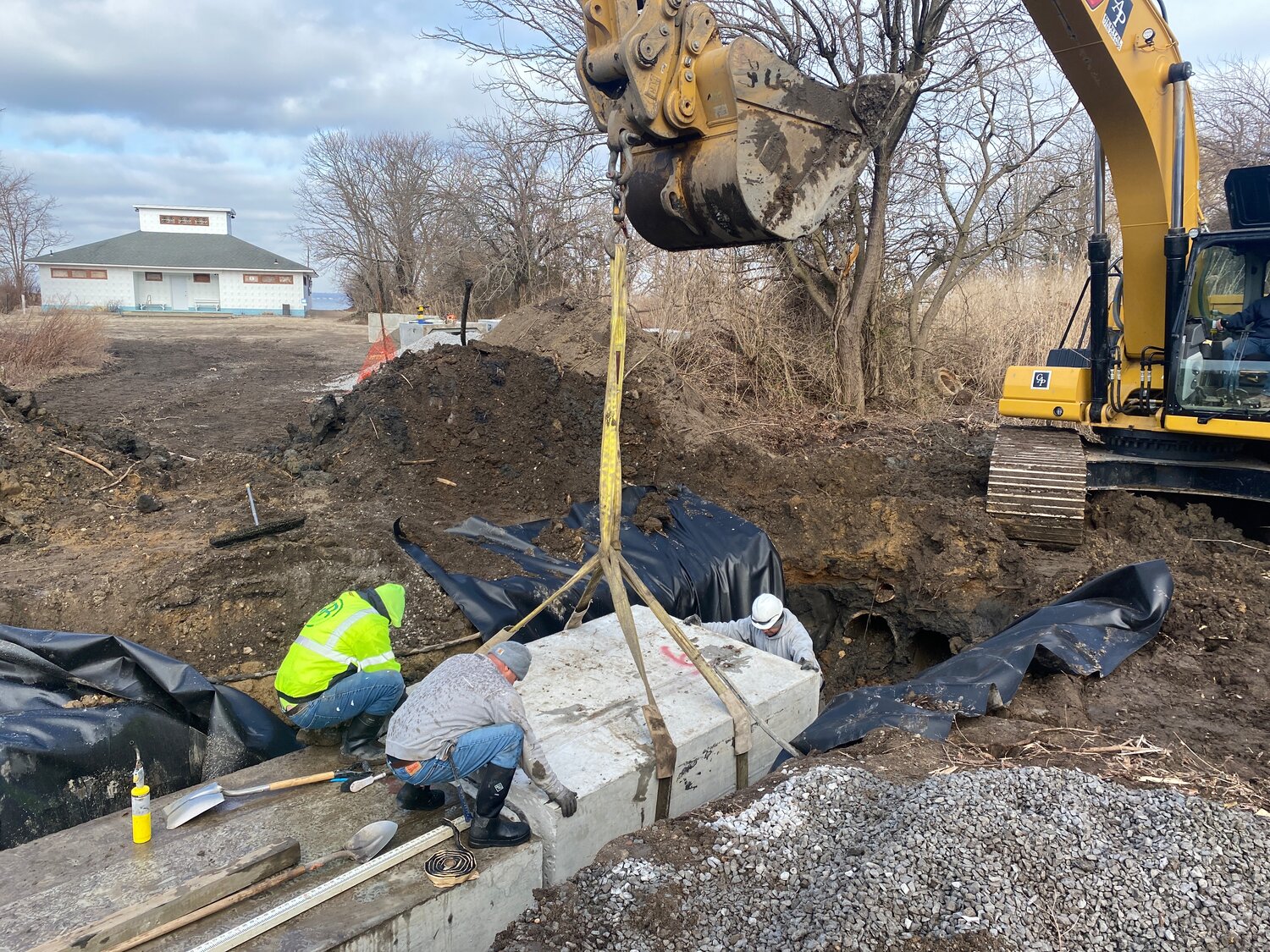Will Crescent Beach open this summer?
On warm, calm summer days, Glen Cove beaches beckon visitors with serene beauty — but for 10 years, the city’s Crescent Beach has been closed due to bacterial contaminants found in the stream that empties out at the beach.
This year, however, there are signs of hope that the beach will be open again, as a critical phase of its remediation plan nears completion. The recent replacement of a culvert marks a significant milestone in efforts to combat contamination that has plagued the beach for over a decade.
The state Department of Enviornmental Conservation approved a remediation plan for Crescent Beach in the fall of 2021 that included the installation of two Helix water filtration systems, which were activated in the spring of 2022. The plans also called for the installation of pipes to channel estuary water into a bioswale — a channel that filters stormwater runoff — filled with plantings to purify the water before it reaches Crescent Beach and Hempstead Harbor; the cleaning of existing pipes; sand replenishment and regrading; and the creation of a basin slope.
According to a 2023 analysis conducted by Save the Sound, Crescent Beach received a discouraging C- rating, and was among the lowest-ranked beaches among 204 beaches in the Long Island Sound Beach Report. It took into account how often water was deemed unsafe for swimming and the magnitude of contamination, and noted persistent challenges facing Crescent Beach.
The completion of the culvert replacement project, confirmed by Glen Cove public works officials on Feb. 26, was a crucial step forward. It established a robust tidal exchange, a visible sign of progress in the beach’s remediation.
City officials and Delia DeRiggi-Whitton, the minority leader of the Nassau County Legislature, voiced their optimism about the culvert. DeRiggi-Whitton, who has been instrumental in securing funding for the beach remediation and coordinating efforts since she was elected in 2012, emphasized its importance for future generations of Glen Cove residents.
“With this last major step now completed, I truly believe we have exhausted nearly every possibility that has been recommended, and I’m hopeful that the beach will be open in the near future,” she said. “This has been a monumental undertaking, and I’m thankful to everyone who has remained so focused on this vital project. I’m truly looking forward to sharing this hometown gem with a new generation of Glen Cove families.”
For the past 14 years, DeRiggi-Whitton has secured county funding for studies of the beach, and worked on a plan to determine the cause of the pollution and to eliminate it with the DEC; Sarah Meyland, an associate professor at New York Institute of Technology, who oversees the school’s Center for Water Resources Management; H2M Architects + Engineers; and former Glen Cove Mayor Tim Tenke.
The culvert replacement, which cost $287,000, addressed a critical aspect of the contamination problem. The new 2-foot-high by 4-foot-wide concrete box culvert replaces an outdated 18-inch-diameter reinforced concrete pipe, to enhance the flushing action of the connected tidal wetland and reduce bacteria levels, which should facilitate Crescent Beach’s reopening.
Rocco Graziosi, project manager at the Glen Cove Department of Public Works emphasized that the reopening will depend on sustained improvements in water quality, with bacteria consistently reduced to acceptable levels.
“The residents can only go back to the beach after the county’s health department gives its OK,” Graziosi wrote in an email. “That OK is based on samples that are taken starting weekly in April and early May, then 2 to 3 times per week during the beach season. Only after a prolonged period of acceptable bacteria levels will the county give its OK.”
Faulty home septic systems were initially suspected to be the cause of the pollution, which led to an extensive investigation by county and state agencies. But testing by the U.S. Environmental Protection Agency in 2018 revealed that animal waste, not human, was the primary contributor to elevated bacteria levels.
Despite fluctuations in contamination levels over the years, recurring testing by Save the Sound has underscored the severity of the problem. Concentrations of bacteria have at times reached levels 1,000 times higher than deemed safe for human contact.

 43.0°,
Partly Cloudy
43.0°,
Partly Cloudy 





